To run the forums, host the website, and travel, I charge a universal service fee for my reviews. This review was sponsored by Raleigh Electric. My goal is to be transparent and unbiased, this video and written review are not meant to be an endorsement of Raleigh products.
The Redux was a favorite of mine last year. Although it had some room for improvement, it was a no-nonsense urban bike well built for speed. For 2019, it is great to see Raleigh has refreshed and upgraded the Redux, making it an even stronger competitor. There is a cost to pay; $3,499, up from last year’s $3,199, so let’s dive in and see if it is worth it. The bike has been redone in many ways, most notably the switch from a Brose Drive TF motor to a Bosch Performance line speed motor rated at 28mph. This change really compliments the ride, and helps the new Kiox display, and Bosh battery system stand out. Speaking of which, by moving to the Kiox and the 36v 13.4ah battery, it really makes for some interchangeability across other Raleigh products and Bosch lines as well. The integrated lights are back and are great with a 500 lumens headlight at the front and 11 lumens 2 LED rear light placed out of the way so most bags won’t obstruct the view. Meeting the road is a pair of Schwalbe Supermoto X tires with performance Green Guard puncture protection that are 27.5” x 2.4”. These tires are a great in-between for staying on the road but still adding some comfort as well as capabilities if the terrain gets a little bumpy. But other than the tires and the locking grips, the comfort doesn’t rally stretch too much further. Its got a rigid aluminum alloy fork, now has a rigid stem, and there is no longer a standard suspension seat post. It is a 31.6mm post so you can swap it out with a Thud Buster or Body Float if desired. The rigidity is sometimes spoken of as a drawback on other bikes, but for a high-speed bike like the Redux, its actually somewhat of a compliment. Similar to the stiff suspension in high-end sports cars, the rigidity gives you a real feel for the road and adds to the responsiveness and agility of the experience. The rear rack is great and will hold things like a backpack or bag, but it is limited to just 10kg for maximum load. That is equal to about 22lbs which you could reach pretty easily as cargo weight tends to add up. Other features include an alloy chain ring guard, adjustable length kickstand that is away from the crank, bottle cage bosses, and sandpaper grip pedals.
Bosch offered three Performance Line motors at the time of this review and they all produce a bit of electronic whirring noise, use energy faster, and introduce some reduction-gearing drag compared to the Active Line motors (and many competing products). What you get in exchange is higher torque output, up to 63 Newton meters in this case, and high-speed 120 RPM pedal support. As someone who enjoys spinning quickly (pedaling fast) it’s nice that the Bosch Performance Line Speed motor can keep up and won’t fade out when downshifting into climbs. Imagine that you’re pedaling towards a hill and begin downshifting in anticipation, to make climbing easier, the motor will simply spin faster without dropping support as you approach… and it probably won’t stress the chain, sprockets, and derailleur as much when you do. This is because the Bosch motor controller, which measures rear wheel speed, pedal cadence, and pedal torque 1,000+ times per second, also listens for shifting and reduces pressure automatically. Given the mid-level Shimano Deore drivetrain with ten gears and wider range of supported speeds here, zero to 28mph (45km/h) you may be shifting more frequently than a Class 1 or Class 2 product, which only supports up to 20 mph (32km/h). For brakes, the Redux features 180mm Tektro Orion hydraulic disc brakes with adjustable reach levers. In the rear, we see 160mm disc brakes, these are a really good setup for stopping those higher-speed moments. The front has a 15mm through axle for strength and rigidity while the rear has a 12mm through axle. Other mechanicals feature 170mm FSA alloy crank arms and a11-32 tooth cassette. All in all a system made to work in harmony with the bikes capabilities.
Powering the 2019 Redux iE is a high-capacity Bosch PowerPack 500 offering 36 volts and 13.4 amp hours for nearly 500 watt hours of capacity. It’s one of the most widespread electric bike batteries in the world right now and uses the same form factor and mounting interface as the older, lower capacity, Bosch PowerPack 400. This means that finding replacements, borrowing additional packs, or renting batteries when traveling becomes much easier. The plastic casing is durable but lightweight, especially compared to the new PowerTube 500 which weighs ~6.3lbs verses ~5.7lbs. PowerPack batteries do stand out a bit visually because they mount on top of the frame tubing, but Raleigh has done their best to sink the battery down into the downtube and even added a plastic shield to cover the top portion, blending it into the frame beautifully. The pack clicks down and secures with a high quality ABUS Ampero locking core. You can order locks and other accessories to match this key, reducing clutter and making it simpler to unlock the bike and battery. I noticed that the core is spring loaded, so you don’t need to insert and twist the key when mounting the pack… just be sure to push down until you hear it click. Raleigh dealers (and really any Bosch certified ebike dealer) can help you adjust the mounting interface over time if you notice rattling or loosening, it’s a durable convenient design. And, that goes for the charger as well. With half a kilowatt-hour of capacity in this battery, the faster 4-amp Bosch charger allows you to spend more time riding vs. waiting, and yet it’s about the same size and in some cases lighter than many generic 2-amp chargers included with cheaper e-bikes. I like the wide proprietary plug design as well, because it isn’t likely to be mixed up with other chargers or get broken as easily. You can charge this battery on or off the bike frame, making it great for commuters who need to charge inside at work, and you won’t be as likely to drop the battery during transport because it has a big plastic loop handle at the top. To maximize the life of this and most Lithium-ion batteries, try to keep it above 20% capacity and avoid extreme heat and cold. If you know you won’t be riding for some time, store at ~50% to reduce stress on the Lithium-ion cell chemistry.
One of the most noticeable updates for 2019 is the Bosch Kiox display panel vs. the Bosch Purion. This thing has a color LCD with Gorilla glass screen, an active Micro-USB charging port, connects via magnets and is removable, but cannot be adjusted for glare because it mounts in a fixed position over the stem. In terms of actual use, the Kiox provides more detailed menu readouts; including 1% stepped battery percentage vs. a five-bar infographic with wider 20% steps. Its color readout provides a fast and comfortable way to interpret assist levels (grey for Off, blue for Eco, green for Tour, yellow/gold for Sport, and red for Turbo). The screen on the Kiox is smaller than Purion, Intuvia, and Nyon, but the colors make it easier to interpret without having to squint and actually read. Because of how it’s mounted, my guess is that the Kiox may also take less damage if the bike tips or crashes. I think it’s actually designed to pop off vs. cracking the mounting bracket when taking direct hits. Interacting with the display involves some button clicking. You begin by charging and mounting the battery, then press the power button on the display unit. The Kiox has power and lights buttons positioned juste below the screen. Most interactions are done through a remote button pad, which is mounted within reach of the left grip. This pad has a +, -, left, right, select, and walk mode button. It boots up in the second view, showing your assist level with a swirling color infographic. different parts of the swirl line fill based on how much power you exert as a rider and how much power the motor exerts, when active. You can arrow left or right to change screen readouts, and I especially like the ones towards the right, which show a range estimate based on remaining battery capacity and the last mile of riding. The display now loops around, so you can keep clicking right and end up back at the first screen, which shows a settings menu. This menu is very deep with options around units (mph vs. km/h), backlight brightness, and Bluetooth accessories including a Bosch eBike app. For now, Bluetooth seems to be reserved for use with aftermarket heart rate monitors and I have not fully tested it. I’m reviewing this product in North America, but Europe is a bit ahead with the release and apps. The two markets differ slightly and I’d recommend working with your local dealer to learn more and get help with software updates. Okay, all things considered, the Kiox is an excellent display unit. It brings a lot of improvements over Purion and Intuvia but probably does contribute to a higher price point. For more information and pictures of the Kiox, I’ve created a guide in the EBR forums here.
The Redux (officially pronounced re-ducks) is a bit of a “re-do” from last year. The previous model was a great bike, and some of these changes have made it even better. The Bosch system is a little heavier, but keeping that weight in the middle with hydraulic brakes and shift detection makes for a more fun and responsive ride. Those looking for a cushy experience may have to add some additional comforts like a suspension seat post for example, or look at another bike entirely. But that’s what makes the Redux so fun, it is unapologetically made to serve a grand purpose: to go fast on real streets. Those looking for a sports car like experience on a bicycle will love the high top speed, lightweight frame, rigid yet responsive feedback, smooth Bosch motor, and stop on a dime brakes. Having the other features like the thicker tires, rack, and integrated lights help too. The 2 year warranty, optional Beeline service, Raleigh heritage, dealer network, and Bosch reliability really make those on the fence much more inclined to jump in and speed off.
As always, I welcome questions and feedback in the comment section below. Whether you own a previous version of the bike, have taken a test ride, or are brand new to the space, my goal is to provide an objective and honest resource. You can also join the EBR forums and share your own photos, videos, and review updates to help others! Have fun out there, and ride safe :)
Pros:
- The Redux is a great starter platform for sporty urban commuting, it has bottle cage bosses and mounting points for a rear rack
- As a Class 3 electric bike, you get motor assist up to 28 mph which is perfect for people who enjoy faster rides or have a tight schedule
- Relatively light weight at ~51.5lbs for the medium frame, considering it has a 500 watt hour battery pack, the triangle on the frame is very wide and open making it easier to lift and carry
- The Bosch Performance Line Speed motor is a welcome addition and is complimented well with the new Kiox display
- Thru-axles keep the wheels stiff and support larger tires, this allows you and the motor to transfer energy more efficiently into the bike but also get some comfort on bumpy terrain
- The rigidity may not be for everyone, but it can provide rider feedback and increase responsiveness, similar to a high-end sports car with stiff suspension
- Minor detail, but I like the kickstand they chose because it stays out of the way and looks nice,
it’s slightly fatter than other stands and holds the bike well - Larger batteries mean longer charge wait times, so it’s great that the Redux iE comes with the fast Bosch 4 amp charger
- Some electric bicycles are notorious for dropping the chain while riding on rough terrain (my Uncle owns the Stromer ST1 Limited and it falls off all the time for him) but Raleigh has used a chain guide (two plates sandwiching the chainring to keep the chain on track)
- The pedals are large, stiff and have sandpaper grips on top to improve traction, as a guy with medium-sized feet I appreciate these over cheaper cage style platform pedals
- Three frame sizes to choose from to improve fit and ride comfort, I was on the medium frame for this review, 2 frame styles this year (high-step and a step-thru that is more of a mid-step) so consider stand-over height, Raleigh has a large dealer network in the US so you can probably find and test ride this bike easier than some other brands
- Excellent weight distribution and a sweet appearance thanks to mid-drive motor and downtube-semi-integrated battery, they blend in perfectly with the overall look
- Hydraulic disc brakes offer good stopping power and the adjustable reach levers are good for large and small riders with different length fingers (or if you wear gloves)
- Pedaling with assist on a Bosch Performance Line motor feels very responsive and fluid, the motor controller measures rear wheel speed, pedal cadence, and pedal torque over 1,000 times per second, it’s one of the most advanced drive systems around
- Another feature of the Bosch Performance Line motors that I really appreciate is how they can support higher pedal rates without fading out, you can reach 120 RPM (pedal strokes per minute) and the motor is still there for you, this means you don’t have to shift gears as frequently if you prefer to spin instead
- You can charge the battery on or off the bike frame and it has a big loop-handle at the top for secure transport, the charging port on the bike is near the left crank arm which could collide but the proprietary Bosch plug is very sturdy compared to most other chargers so that’s less of a concern here, I like the rubber cap and leash system that Raleigh designed to cover the charging port, it was easier to seat and won’t get lost
- I really like the battery choice and mounting design here! They opted for the lightweight, less expensive Bosch PowerPack 500, but sunk it into the downtube for lower weight distribution and a nicer look
Cons:
- Bosch Performance Line motors tend to produce more noise because of the power on offer and reduction gearing design, the 20 tooth chainring here will spin 2.5 times for each crank revolution and that produces a bit of drag if the bike isn’t powered on or you’re tryin to pedal beyond the maximum supported ~28 mph top speed… it will not impact coasting beyond ~28mph
- I really like this ebike, but you definitely pay for the Bosch drive systems, name brand Schwalbe tires, upgraded hydraulic disc brakes, and multiple sizes… it’s nice that you can buy Raleigh products from dealers and take test rides + get service over time (and that also contributes to the higher price)
- It’s a shame we lost the suspension seat post and stem, definitely a more rigid ride this year, but others will appreciate that
- The maximum weight on the rack is set for 10kg, it would have been great to see it bumped up to 22kg because the 10kg (22lbs) can be reached before you know it in some cases
- Not a big deal given all the capabilities of the Bosch Kiox display, but it should be noted that it while it can be removed, it cannot be adjusted for glare
Resources:
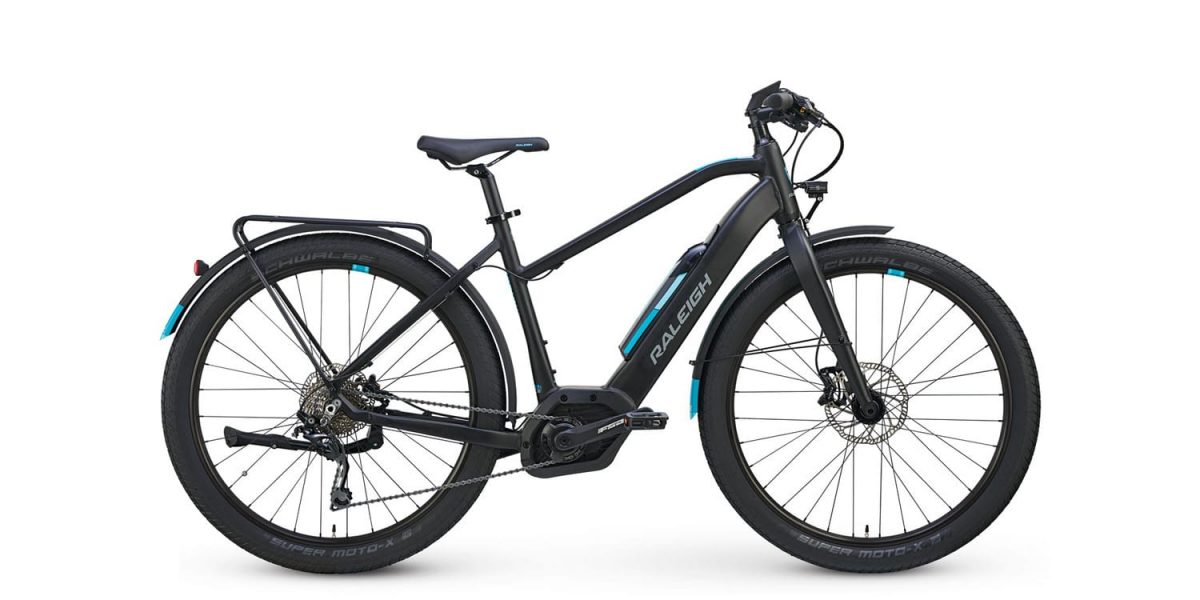
















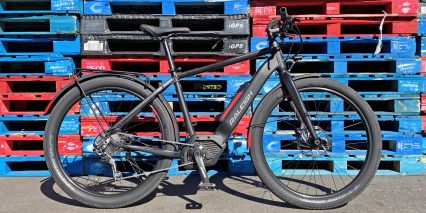
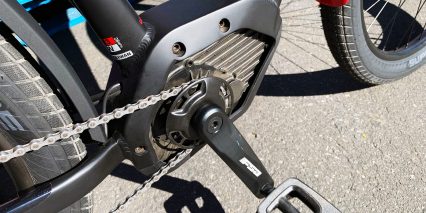
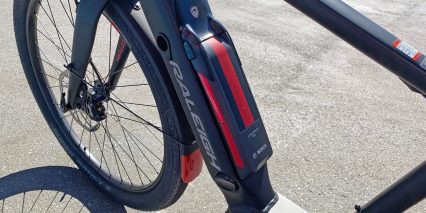
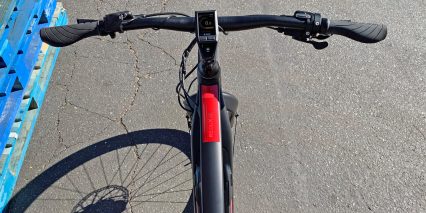
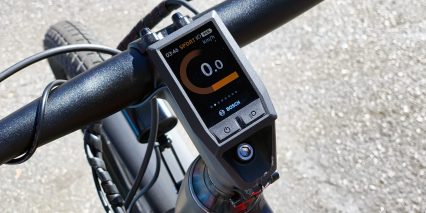
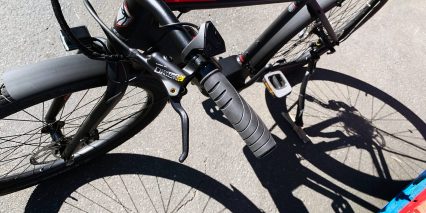
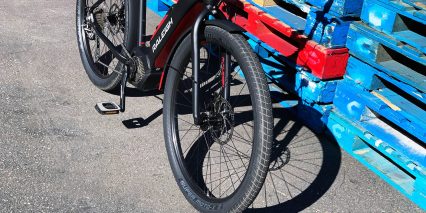
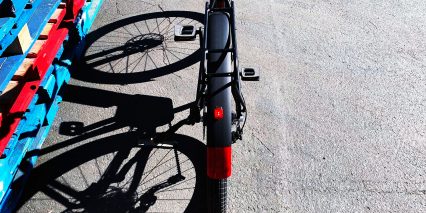
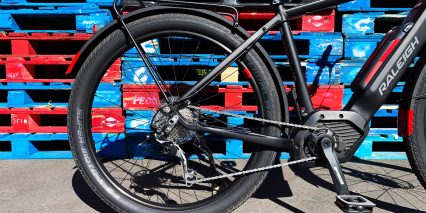
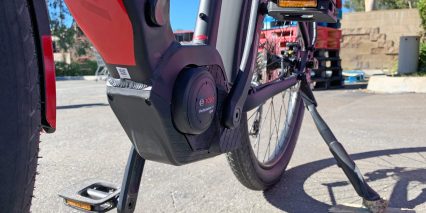
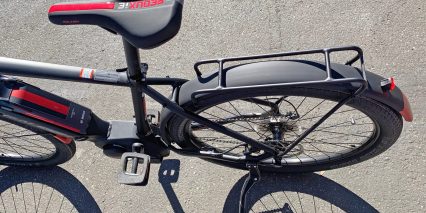
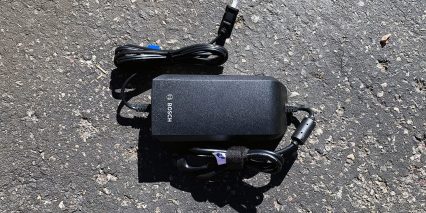
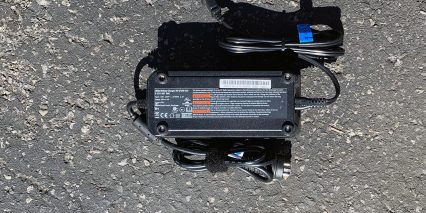
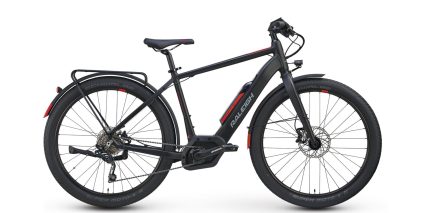
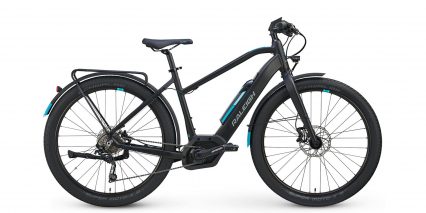

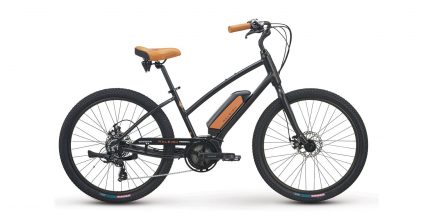
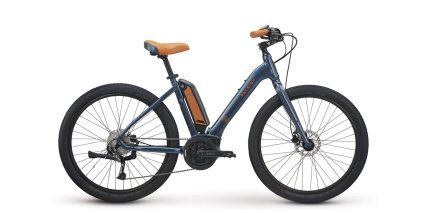
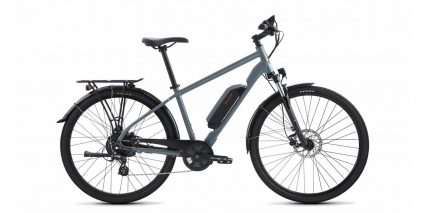
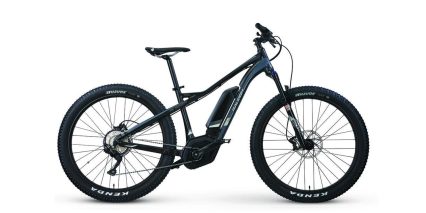
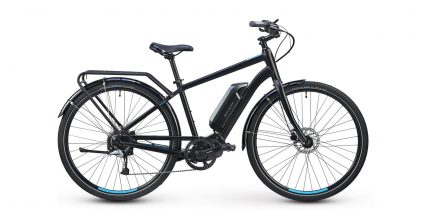
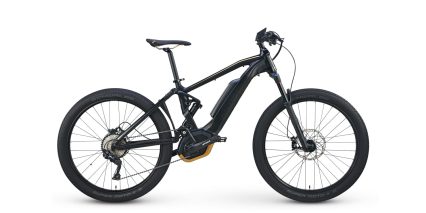
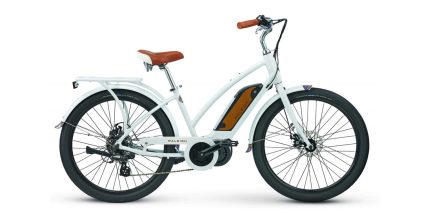
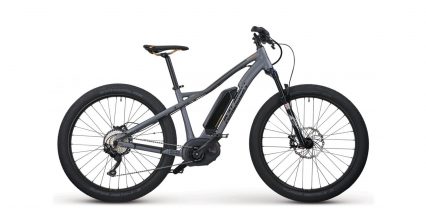
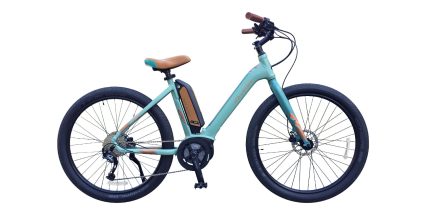
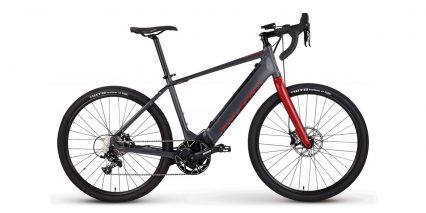
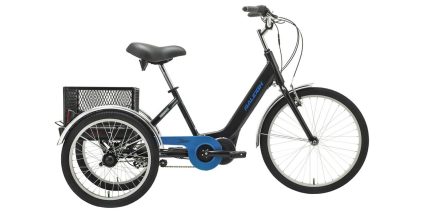
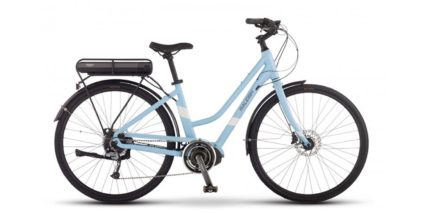
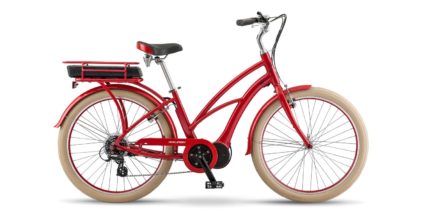
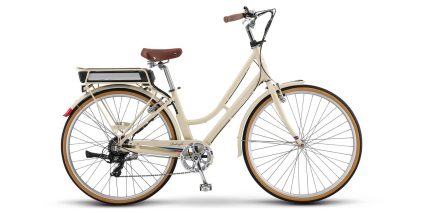
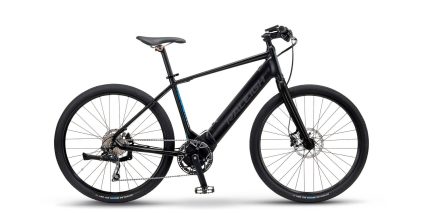
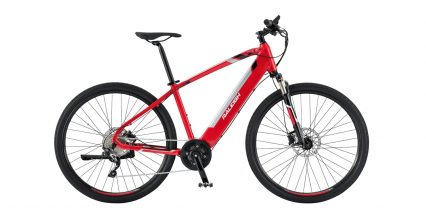
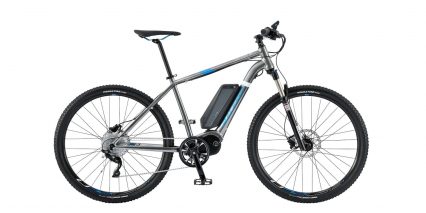
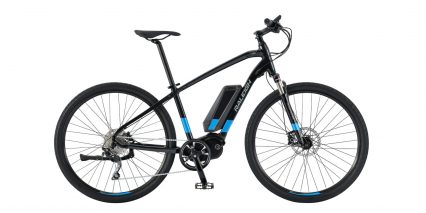
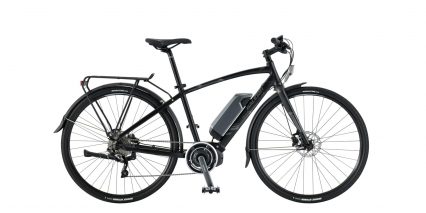

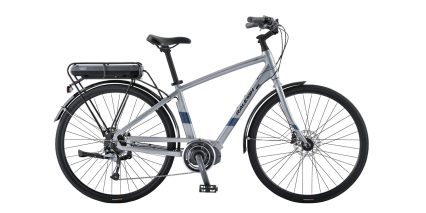
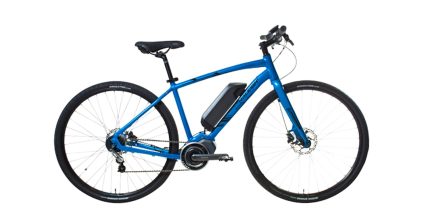
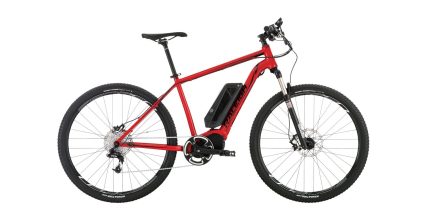
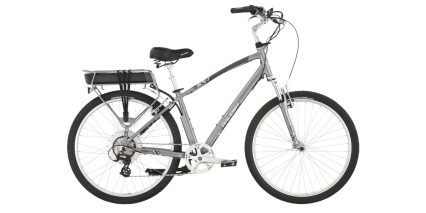
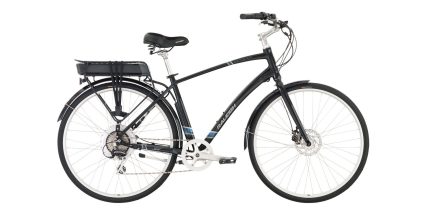
Rick
6 years agoHi, this bike is essentially the same as the iZip Moda or the previous Raleigh Redux iE except they changed the drive from Brose to Bosch. In other reviews Court said he really loved the Brose system and preferred it to the Bosch and other systems. However, in this review it says the drive system was upgraded from Brose to Bosch. How is it an upgrade? Does anyone have any ideas why Raleigh switched from Brose to Bosch? I just bought an iZip Moda in November of 2018 and haven’t used it much because it is winter here. However, to me I would prefer the Brose system to the Bosch, what do you say?
Thanks,
ReplyRick
Court
6 years agoHi Rick! I like how quiet and smooth Brose is, but the Bosch batteries tend to be more durable and some dealers have expressed that Bosch support and reliability is above Brose… it’s hard to beat Bosch in this market right now. I still think both products are great :)
ReplyPaul
6 years agoHey,
I’m looking for a commuter bike in the $2,000 – $3,000 range. With this bike on sale (their site is listing it as $2,500), would you say this is the best I can get in that range? I’m hoping to use it as my primary mode of transportation, so I’m particularly interested in something that’s fast (i.e. Class 3), reliable, has long range, and that is reasonably comfortable.
Thanks,
ReplyPaul
Court
6 years agoHi Paul! Are we talking about the current generation Raleigh Redux iE? If so, yeah, I really think this is a great product. It’s reliable and fast, the battery design is awesome, I’d probably add a suspension seatpost but otherwise I really like it :)
ReplyAlan
6 years agoI’m actually very disappointed Raleigh replaced the Brose motor for a flashier, but less efficient and noisier Bosch system. I know the Bosch system has a nicer display but I much prefer the simplicity, efficiency and lighter weight of the Brose system. Most of us won’t have multiple e-bikes, so being able to swap batteries among different bikes isn’t much of an advantage. As far as I can tell, the only thing better about the Bosch system is the display, which is mainly superficial and cosmetic.
If I can find a decent price on a 2018 step-over model I’ll definitively take it over this flashier but less-functional newer model.
ReplyCourt
6 years agoCool! You’ll probably save some money on a last-year model too. I agree that the smaller size, lighter weight, and quieter operation of Brose is great. My experience with Bosch has been pretty great over the years, but Brose is expanding their US support and the new Drive S Mag is pretty sweet. I’m visiting BULLS this week to film some of their models that use it and I really like the performance. Whatever you choose, thanks for the comment and feel free to chime in once you’ve got some saddle time :)
ReplyJohn M Delgado
5 years agoMy Redux iE is about a year and 1/2 old and I used daily (5 out of 7 days) for commuting to work. It was stored in my garage at night and in a covered bike room at work. One day a few weeks ago I went out to the garage and realized that the battery was not recharged despite being plugged in so I took the bus. After trying another charger and plugging the battery in following the proper sequence it still would not charge. After repeated attempts to communicated with Raleigh (which is a whole other story) I was advised to purchase another $700 battery from them and given an attachment on how to properly care for a battery. Felt like a big FU to me. My Redux sits in the garage drying my rain gear as I now use my regular non electric bike like I have for years.
ReplyCourt
5 years agoHmm, that’s a bummer, I’m sorry to hear about your less than positive experience here and sad that your bike isn’t getting used. Thanks for sharing this, I hope that if you try another ebike, the company is a bit more supportive and the battery lasts longer :/
ReplyJohn Mathna
3 years agoCort I just saw these postings and thought I’d ask you if you know of any support from Raleigh that would pertain to the Brose battery issues that were common on these Redux models with the Brose motor/battery combo. I have one that been defunct now for over 2 yrs
ReplyCourt
3 years agoHi John! My contacts with Raleigh Electric and some of the other Accell brands have moved or changed. I think there was a big transition a couple of years ago and their headquarters moved to Seattle and some brands were sold. As a result, I don’t have as much insight as I used to and I’d be guessing. I hate to disappoint you, but perhaps contacting Raleigh Electric directly would be the best approach… and if you’re trying to get a battery repair, consider using a service like FTH Power to repack it :)
Reply